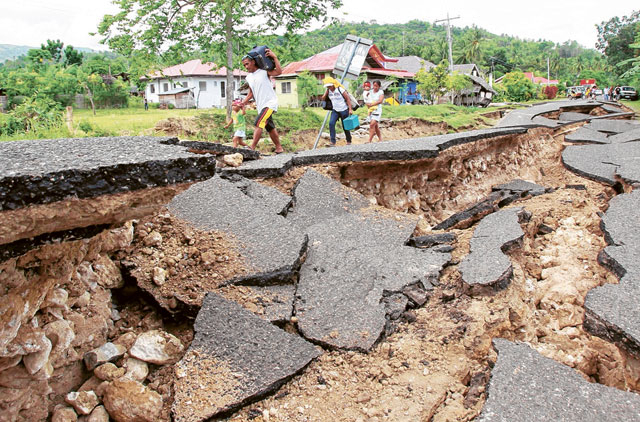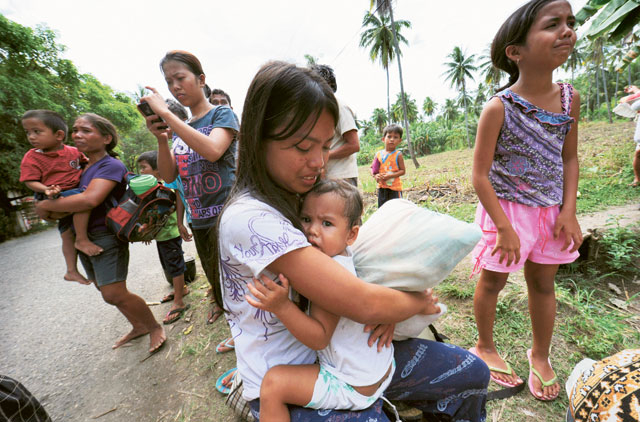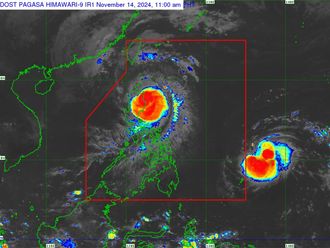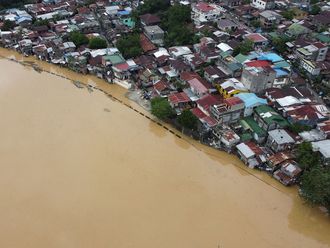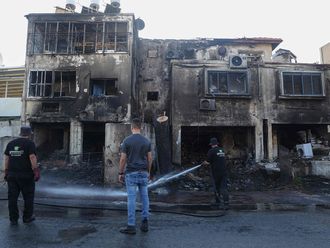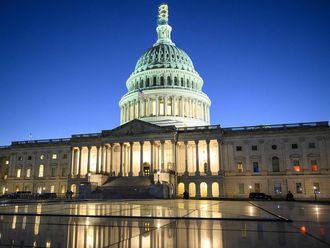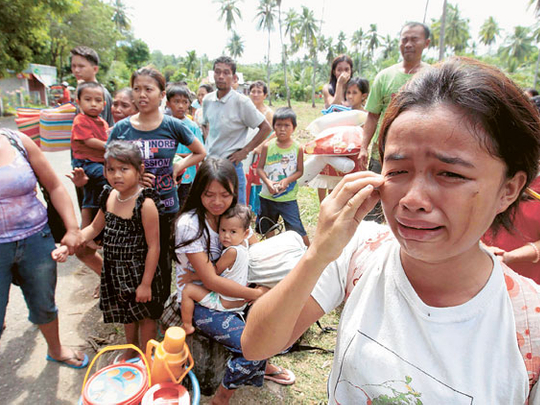
Manila: Policemen and townsfolk used sophisticated and primitive equipment as they tried digging into ten-metre deep landslides where 71 people were buried in their homes in the villages of one major town and one city in central Philippines' Negros Oriental province, following a 6.9 magnitude quake on Monday, sources said.
Rescue officials say they are losing hope of finding anyone alive among 71 people still buried in landslides set off by a powerful earthquake. So far, 26 bodies have been recovered and identified.
Survivors of a deadly quake in the Philippines begged rescuers on Wednesday to keep searching for dozens of people buried in landslide.
President Benigno Aquino III on Wednesday flew to the disaster area in central Negros Oriental province and gave orders to speed up the reconstruction of roads and bridges that collapsed when the magnitude-6.9 quake struck on Monday.
Up to 86 people have been killed, 15 have been identified and 71 others remain missing in a village in Guihulngan City and La Libertad town where two major landslides occurred separately after the quake, Undersecretary Benito Ramos, executive director of the National Disaster Risk Reduction and Management Council told Gulf News.
Eleven members of the Toting family perished as the earth opened and ate their homes in Planas village, Guihulngan City. The Totings and 11 other families (and a total of 29 people) were buried by the landslide, Ramos said.
But Governor Roel Degamo insisted 40 people, and not 29, were buried in Planas village. If this is confirmed, it could raise to 97 (with 82 missing) the number of people who died in the quake.
Meanwhile, 12 members of the Lisondra family were buried by a landslide that wiped out a community in Solongon Village, La Libertad town, said Ramos.
The Lisondras and at least 71 residents were buried by the landslide, said Ramos.
Rescuers were ordered to cover more areas in Negros Oriental which might have suffered the fate of the villages in Guihulngan and La Libertatd, said Ramos.
The 15 dead who were identified Monday perished due to collapsed walls, fences and flying debris in Guihulngan, La Libertad, and other damaged areas such as Jimalalud, Tayasan, and Ayungan, all in Negros Oriental, said Ramos.
Those injured in Negros Oriental's mountainous area could not be brought to the city for better treatment because nine bridges were damaged, including four that were closed, said Governor Degamo.
Rescuers from the city had difficulty entering the mountainous and coastal areas because of impassable roads, said Degamo.
Civil defence chief Benito Ramos said in Manila that five military battalions, or about 2,000 troops, had been deployed to the devastated zones and were helping local rescue units.
"We are racing against time, and hoping against hope that maybe, just maybe some of them might still be alive," he said.
Governor Degamo said the likelihood of finding anyone alive was very low. "We are in a state of shock, and all we can do now for those still missing is to pray," Degamo said.
He said soldiers and rescuers in La Libertad raced on Tuesday to find a young woman who had sent a mobile phone text message to her relatives that she was pinned down, but alive.
The search, however, ended in tears hours later.
"She was found dead and still clutching her cell phone," Degamo said.
Cottages wiped out
The sea rose and five cottages were wiped out at the Comendador Beach Resort in La Libertad town and 20 other homes fronting the bay were damaged in Libertad's nearby area. The occurrence of a tsunami, however, was ruled out.
The sea also receded several metres from the shore in Bindoy town, near La Libertad, but this did not deteriorate into a tsunami, Ramos said, adding residents were promptly evacuated.
Schools and offices were closed as government workers assessed the buildings in quake-hit areas.
Many residents in areas quite far from hard-hit Negors Oriental remained apprehensive a tsunami might still occur.
"In our place, more people were afraid of the tsunami than the earthquake," said Eva Grasparil, a teacher in Bugasong, Antique.


